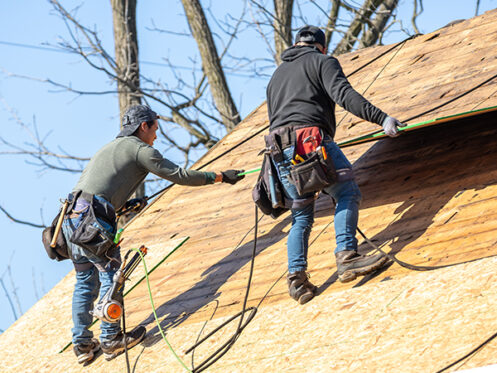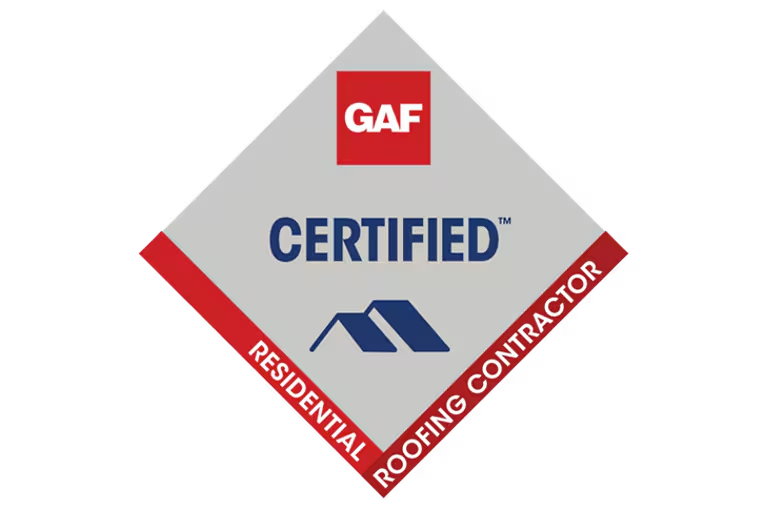Your roof doesn’t just keep the rain out anymore. Today’s roofing trends are smarter, cooler, and built to perform in ways most people wouldn’t expect. Whether you’re dealing with extreme heat or looking to improve your home’s efficiency, what’s on top matters more than ever. At The Roof Detective, in Columbus, OH, we keep a close eye on the innovations that are changing the way roofs are built and maintained.
Cool Roofs That Do More Than Reflect Light
When summer heat hits hard, your roof becomes a battlefield. Traditional shingles absorb sunlight, heating your attic and raising your cooling costs. That’s where cool roofs come in. These use reflective materials that bounce sunlight instead of absorbing it. That reduces surface temperatures, which can reduce attic heat buildup and lighten the load on your air conditioning.
If you’ve ever touched a car hood in the sun, you know how fast surfaces heat up. Now imagine that across your entire roof. Lighter colored or reflective shingles stay cooler to the touch and slow down how quickly heat travels indoors. On top of that, the UV-resistant finish can extend the life of the shingles.
The drawback? Cool roofing materials tend to cost more upfront. If your area doesn’t get consistent high heat, you may not see a fast return. But if your AC runs constantly and your attic feels like a sauna, this type of roof helps you dial down the pressure without sacrificing comfort.
Green Roofs That Add Life and Not Just Shade
A living roof doesn’t just look good from a balcony. It functions like a sponge, soaking up rainwater, filtering air, and cooling the space below it. These systems involve layers of soil and vegetation installed over a waterproof base. They’re more common in urban buildings, but homeowners have started exploring smaller-scale versions to help manage runoff and insulate their homes.
The real magic is in how green roofs reduce heat gain. Vegetation cools the air through evaporation, which helps lower the temperature on hot days. If you’ve ever stepped onto grass after walking on hot pavement, you know that temperature contrast instantly. Now picture that on your roof.
Maintenance is a trade-off. Green roofs require watering, pruning, and monitoring for drainage issues. They also require a structure strong enough to support the extra weight. If your roof isn’t built for it, retrofitting can be expensive. However, if you’re building new or renovating an addition, a living roof combines beauty and performance in one place.
Smart Coatings That Adapt to Conditions
Newer roof coatings don’t just reflect heat. Some can adapt to different weather patterns. These “thermo-adaptive” coatings work by changing reflectivity depending on temperature. When it’s hot, they reflect sunlight. When it’s cool, they retain heat.
If you want to avoid replacing your entire roof, applying a smart coating is a low-cost way to reduce temperature swings. It works especially well on flat or low-slope roofs where sun exposure is constant and water pooling becomes a risk. Some versions are spray applied whereas others are rolled on like paint.
The trade-off here is durability. These coatings can wear out faster than full replacements, especially in areas with lots of rain or high winds. You’ll need to reapply every few years to keep the benefits going.
Solar-Integrated Roofs That Do Double Duty
If you’ve looked into solar panels but don’t love how they look, solar shingles might catch your interest. These are made to mimic the shape and style of asphalt roofing while generating electricity at the same time. They connect directly into your home’s energy system, often reducing what you pull from the grid. If you’re trying to shrink your carbon footprint without drawing attention to your roof, solar shingles offer a stealthier alternative.
The technology has come a long way. Older versions lacked the power output to make a real dent in bills. But newer options have closed that gap. While they still don’t match traditional solar panels for output, they perform better in diffused light and offer a cleaner appearance.
This material comes at a premium upfront, so not every roofer installs them. You’ll also need to check local codes and utility rules. If your roof doesn’t get full sun or has lots of angles and vents, traditional panels might still win on cost and performance. But if you’re re-roofing and want something sleek that gives back, solar-integrated materials can pull double duty in style.
Metal Roofing That Can Stand Up to the Weather
Once seen mostly on barns or industrial buildings, metal roofs have gained traction in residential spaces for their resilience and modern look. They’re available in standing seam panels or metal shingles that mimic traditional designs. What sets them apart is how they handle heat, rain, and wind. A well-installed metal roof reflects sunlight, sheds water quickly, and resists warping from temperature swings.
If you’ve dealt with cracked shingles or water stains in the ceiling, the upgrade to metal can bring peace of mind. On hot days, painted metal surfaces reflect more solar radiation than asphalt. That means your attic stays cooler, and your HVAC system doesn’t have to work as hard.
Noise used to be a concern, but underlayment and insulation options have improved. The bigger drawback now is cost. Metal costs more per square foot and takes longer to install. If you plan to stay in your home for decades, it pays off. If you’re unsure how long you’ll stay, the return can be harder to measure.
Synthetic Roofing That Mimics the Best Aesthetic Materials
You might love the look of slate or wood shakes, but the cost and weight can be a deal-breaker. That’s where synthetic roofing comes in. Made from polymer blends or rubber-based materials, these shingles copy the style of natural products without the same upkeep. They resist rot and keep their color longer than natural wood.
When you see these up close, the texture looks surprisingly real. They’re lighter, easier to install, and often last just as long as their natural counterparts. For homes in wildfire-prone areas, synthetic versions offer higher fire resistance while still fitting neighborhood style rules. Cost is similar to mid-range asphalt or slightly higher, depending on the brand. You may need to order in advance if your roofer doesn’t keep them in stock.
Reflective Gravel or Stone Ballast for Flat Roofs
If your home has a flat roof, traditional shingles or tiles aren’t an option. Reflective gravel or light-colored ballast can add function and longevity without mechanical upgrades. These layers reflect sunlight and shield the membrane underneath from direct exposure, helping it last longer and stay cooler.
Think of it like covering your skin with a towel at the beach. The rocks absorb and scatter heat, which reduces the surface temperature of the roof. That cuts down on thermal shock, which can cause cracks or splits in aging materials.
This system needs occasional raking or redistribution to keep coverage even. If heavy winds scatter the rocks or drain openings get blocked, you can end up with puddles and early wear. But with regular checks and a solid drainage plan, it’s a no-frills way to stretch the life of a flat roof and lower your cooling needs in the heat.
Learn More About the Latest Trends
With options that reflect heat, reduce your bills, and last longer with less maintenance, you’ve got more choices than ever to build something smarter. If you’re ready to rethink your home’s roof, start with a quote from the team at The Roof Detective. We also offer professional roof inspections, storm damage assessments, and leak detection services.





